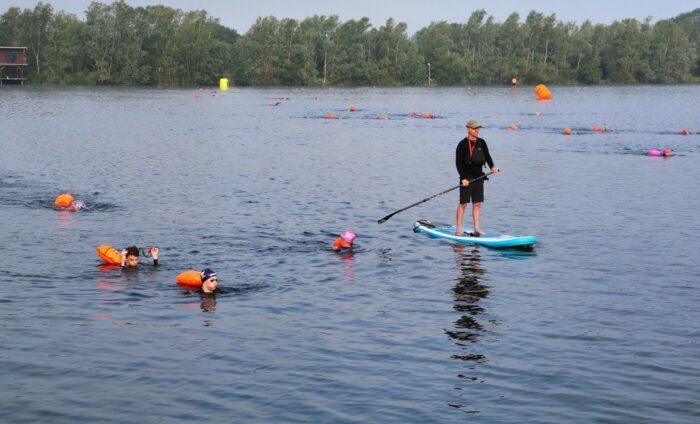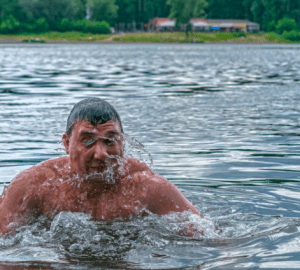
How has the pandemic affected open water swimming venues?
The combination of pool closures and a hot summer has seen demand boom for swimming at safe, supervised venues
The combination of pool closures and a hot summer has been good for outdoor swimming. In May, when I swam in the Thames, people stopped, stared, and took pictures. Now it seems as if everyone is doing it and nobody bats an eyelid. Outdoor swimming has been normalised in a few short months. However, not everyone wants to take their chances with potentially polluted river water, the lack of lifeguards or the possibility of being run over by a motor cruiser. Consequently, demand for swimming at safe, supervised venues has boomed.
Sold-out sessions
For example, when I wanted to book a slot at Shepperton Lake (Surrey), I had to wait a week and book one early on a Wednesday afternoon, when I should have been working. It was full – and the lake has significantly added to its sessions since last year. Bill Richmond, from TriFarm (a lake in Essex), says: “in the immediate 6-8 weeks after the lockdown was released, we were absolutely inundated. We were sold out with 150 swimmers a day during the week, and 200 per day at the weekend. All in socially distanced, capacity constrained sessions of 50. At least double a normal year.”
At Queenford, in Oxfordshire, they reached 95% of the swims they’d had for the previous year by the first week in August, despite opening five weeks later and limiting the number of swimmers in the water. Katia Vastiau, who volunteers at the lake, says: “most sessions are fully booked.”
NOWCA, whose lake management system is used at venues around the country, also say they’ve seen an overall increase in membership during 2020.
Covid-secure
Still, venue operators had to work hard to make swimming possible. When lockdown measures first started easing, there was no universal guidance on how an outdoor swimming venue should operate to provide a covid-secure environment. There was (and still is) a theoretical risk that coronavirus could be transmitted through fresh water and questions needed to be answered about how safety teams could support and, if necessary, rescue swimmers in difficulty. They had to implement new booking and check-in systems, rethink entry and exit points and ensure social distancing could be maintained.
Katia, at Queensford, thinks these changes have impacted people’s approach to swimming. For example, they tend to swim for longer. “We’ve restricted swims to one hour – and many people have been swimming for the full hour when they wouldn’t have previously. It seems they have stopped taking swimming for granted. It is like swimming is a treat and they want to make the most of it. They’ve also become less concerned with distance and water temperature and are just grateful they can swim.”
Creative and adaptable
What will happen next? I expect many venues are looking at how long they can continue operating into autumn and some, who don’t do so already, will be looking at year-round swimming. This could prove tricky if access to indoor space for post swim cake and warming up is restricted, but swimmers and venues have shown they are creative and adaptable. I think they will rise to the challenge
Simon Griffiths is the founder and publisher of Outdoor Swimmer • Email Simon at: simon@outdoorswimmer.com







